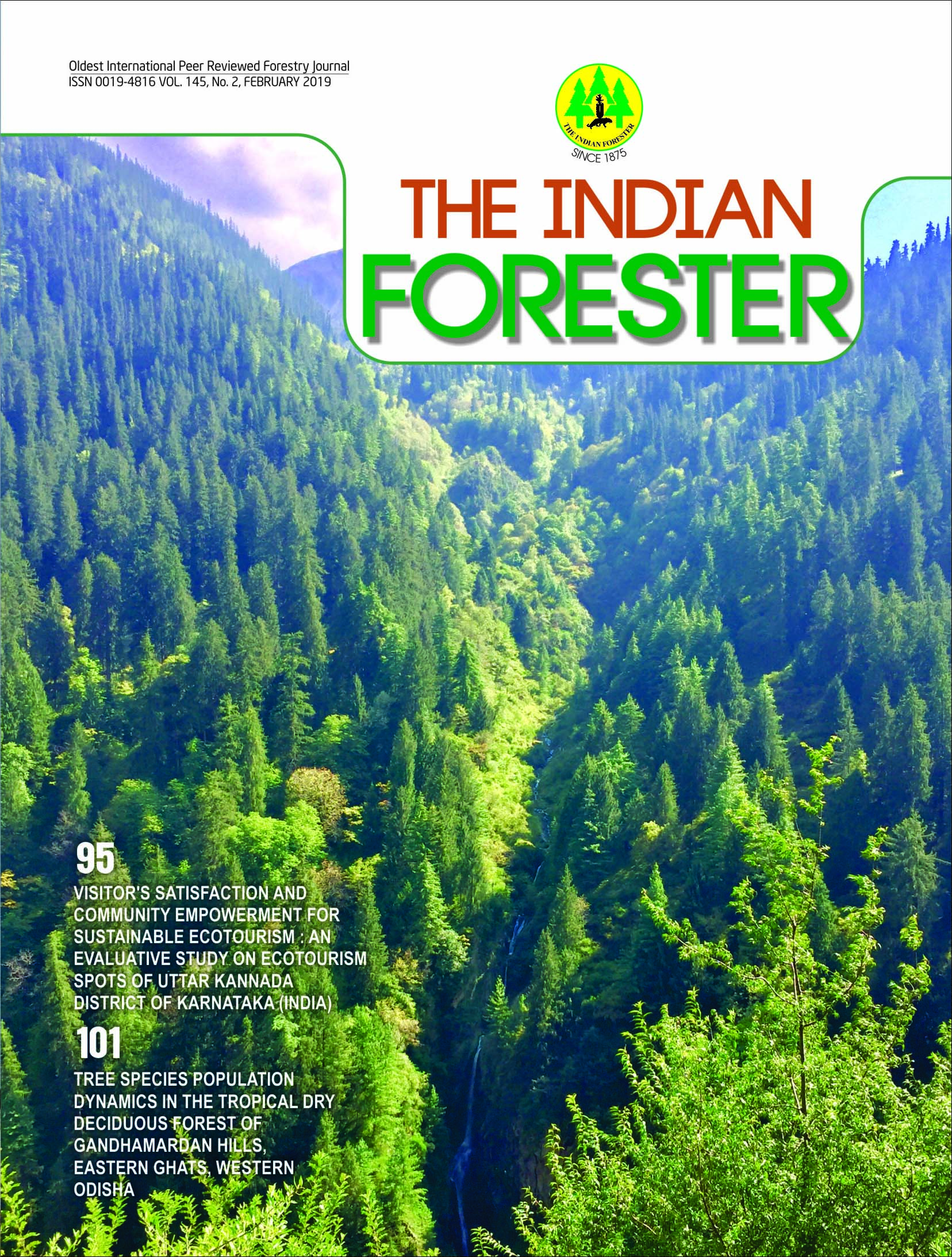Anatomical, Physical and Mechanical Properties of Aerial Roots of Ficus bengalensis L. (Thandlu)
DOI:
https://doi.org/10.36808/if/2019/v145i2/144286Keywords:
Wood anatomy, Density, Shrinkage, Strength, Stiffness, Hardness.Abstract
This study reports on radial variations of anatomical parameters of aerial roots Ficus bengalensis (Thandlu) such as fibre length, fibre diameter, fibre lumen diameter, fibre wall thickness, vessel element length, vessel diameter and vessel frequency. Certain important physical and mechanical properties of Thandlu wood such as equilibrium moisture content (EMC), specific gravity, density, flexural strength (modulus of rupture-MOR), flexural stiffness (modulus of elasticity-MOE), compressive strength parallel to grain (maximum compressive stress-MCS), compressive strength perpendicular to grain and surface hardness were also investigated. Average air-dry density of Thandlu wood was found to be 537.6 ± 91.4 kg/m3. Moreover, specific gravity exhibited increasing trend from pith to periphery and average values were found to be correlated with anatomical properties. Radial variations of anatomical parameters were observed to be significant. Fibre lumen diameter was negatively correlated while fibre wall thickness was positively correlated with density. Similarly, vessel element length was positively correlated with fibre length and fibre lumen diameter was found to be positively correlated with the fibre diameter. The physical and mechanical properties in air-dry condition of Thandlu wood were compared with Tectona grandis (Teak) wood. Naturally having long cylindrical shape, light to moderately heavy wood and moderate to strong mechanical parameters of Thandlu in dry condition, their traditional applications in different areas are well supported by the observations made in the present study.References
Anon. (1986). IS: 1708. Methods of testing of small clear specimens of timber. Parts 1-18. Bureau of Indian Standards, New Delhi. 64pp.
Abasolo W.P., Yoshida M., Yamamoto H. and Okuyama T. (2009). Stress generation in aerial roots of Ficus elastica (Moraceae). IAWA Journal, 30(2): 216-224.
Adeniyi I.M., Adejoba O.R., Alao O.J., Noah A.S. and Salaudeen G.T. (2013). Comparative anatomy of some Ficus species. Research in Plant Sciences, 1(2): 15-19.
IAWA Committee (1989). IAWA list of microscopic features for hardwood identification. IAWA Bulletin, 10(3): 219-332.
Mukherjee P. (1983). Nature Guides: Common Trees of India; Published by World Wildlife Fund-India, Oxford University Press. 35pp.
Purkayastha S.K. (1999). A Manual of Indian Timbers. 3rd Edition, Sribhumi Publishing Company, Calcutta (Kolkota). 614pp.
Pryor M. and Wei L. (2015). Aerial roots of Ficus microcarpa. Planting Futures, 77-85.
Ramakrishna T.M., Poornima S. and Vimala R. (2015). A report on different types of aerial roots. World J. Phar. and Pharma. Sciences, 4(6): 794-797.
Raturi R.D., Chauhan L., Gupta S. and Rao V.R. (2001). Indian Woods: Their Identification, Properties and Uses. Vol. VI (Euphorbiaceae to Salicaceae). Indian Council of Forestry Research and Education. Dehra Dun. 197pp.
Sekhar A.C. and Rawat B.S. (1966). Physical and mechanical properties of teak from different locations in India and neighboring areas. Indian Forest Records. Timber Mechanics, 1 (13): 197-212.
Shankar S. (2015). Living Root Bridges: State of knowledge, fundamental research and future application. IABSE Conference - Structural Engineering: Providing Solutions to Global Challenges, Geneva, Switzerland; 23-25 September.
Sharma M., Sharma C.L., Lalmalsawma M., Singh M.K. and Gogoi B.R. (2014). Wood anatomy of some Ficus species of Mizoram, NE India with reference to their identification. Inter. J. Botany and Research, 4(2): 19-32.
SigmaStat (2006). Statistical software for Windows (Version 3.5), Systat Software Inc., USA.
Downloads
Downloads
Published
How to Cite
Issue
Section
License
Unless otherwise stated, copyright or similar rights in all materials presented on the site, including graphical images, are owned by Indian Forester.





